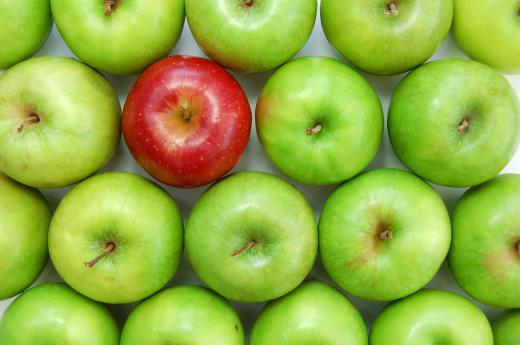A cider mill is a facility in which apple cider is made. The structure in which the mill is contained is very often located near an apple orchard for more efficiency in the production process, and the machinery contained therein can vary significantly according to how up to date the cider mill is and what volume of cider or other products is being made. These mills have been around for centuries, and the propulsion method of the machinery has changed accordingly; older mills may have been powered by horses, or even by water wheels, while more modern mills are powered by gas engines, electricity, or other means.
Smaller cider mill operations could be portable, but most were historically permanent and were housed in structures that looked like any other barn one might encounter. Orchard owners would transfer apples to the mill, which could be on-site or located nearby, and pay the cider mill owner an agreed-upon amount to press the apples into cider. The cider itself could be stored in barrels or carboys for shipping, or into jugs for direct sale. The varieties of cider produced would vary according to the apples used, and the apples could be combined to make new types of cider for sale.

One method of pressing apples in a cider mill historically involved feeding the apples into a series of troughs. A large stone wheel was set in one of the troughs, and this wheel was attached to an axle that was fixed to another vertical post that would allow the press operators to rotate the wheel around the trough. The coarseness of the wheel would help grind the apples down to pulp, and the resulting liquid from the apples could then be collected. The apples were often transferred from a holding trough to the pressing trough by hand, with a human operator shoveling the apples. Other press styles exist as well, and modern machinery often takes much of the effort out of the process.

Mills were historically powered by horse or by water through use of a water wheel. More modern mills are powered by gasoline or by electricity, allowing the mill operator to press apples at a higher capacity and at higher speeds. The increased production means higher profits and in some cases lower production costs. Despite advances in cider mill technology, many mills operate by traditional methods to preserve the history of the trade.
